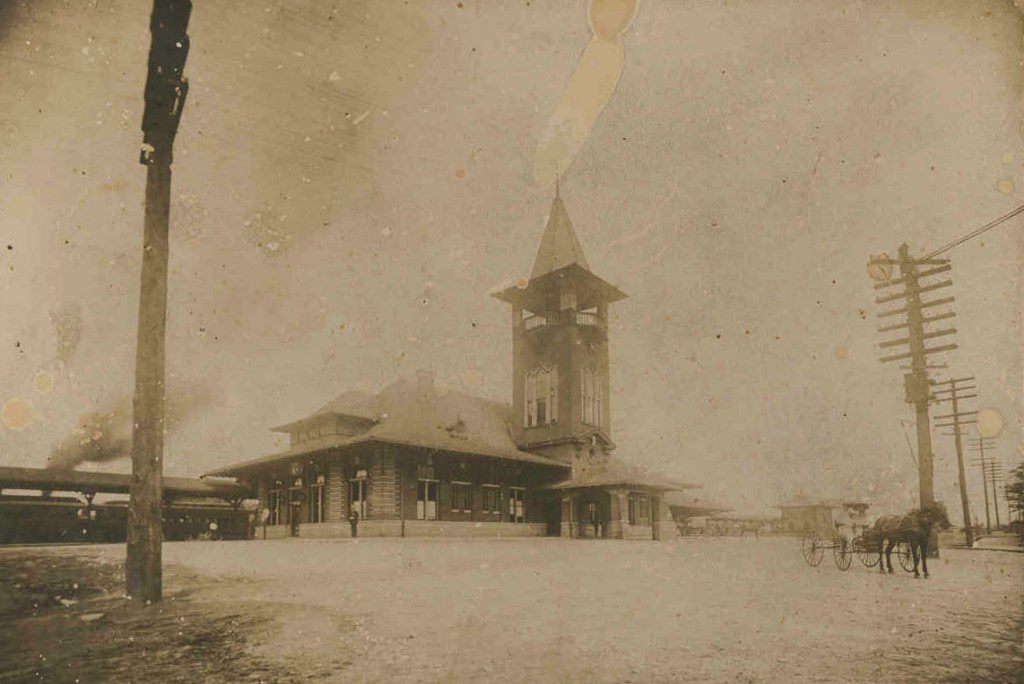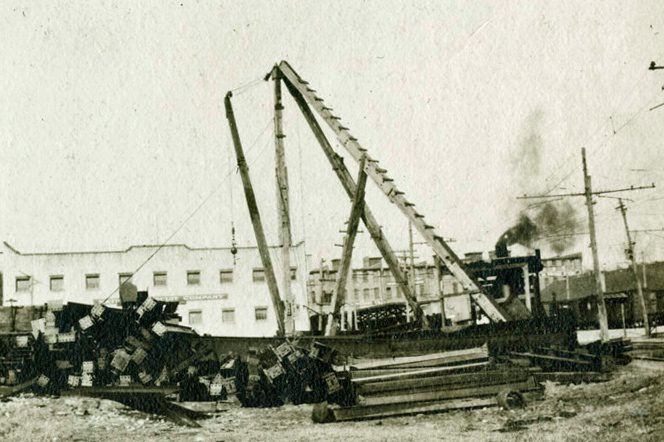The Swamp Rabbit got its start as a railroad line, promising to create a better trade route between Greenville and nearby major cities like Asheville and Knoxville. Sadly, that promise never came through. But you can’t blame the line’s failures on disinterest or indolence on the part of the local people, who cheered on and fought for the Swamp Rabbit from day one.
During its less than 100 years of operation, the Swamp Rabbit rail line — part of a larger system intended to connect several Southern states — went by around six different official names.
“You may name your boy Percival, Algernon, or Montmoressi, but if some chap at school dubs him ‘Sorrel Top,’ ‘Bully,’ or ‘Buster,’ the nickname will stick and his real name [be] forgotten. So it has been with this little railroad . . . . [‘The Swamp Rabbit’ name] continues to the exclusion of the longer and higher sounding one,” wrote keen journalist Charles David for The Greenville News in the 1920s.
And he was right. Even today, the railroad’s best remembered as simply the Swamp Rabbit.

In the 1840s — when railroad passage through the Upstate was still just a dream in the minds of Greenville’s people and the talk of its influential businesspeople — railroad track layers might earn $12 per month for their labors.
Or at least, this was the “liberal price” that track layers were already being paid near the state’s capital of Columbia.
In 1853, after much anticipation, Greenville finally gained its first railroad. The Greenville and Columbia Railroad had made its path to the town, connecting it both to Columbia on down to the South Carolina coastline.
“The town immediately woke to life,” wrote Greenville economist Guy Gullick. “It soon become the metropolis of the section and its trade quickly extended on all sides, reaching far over the mountains into North Carolina.”
For 20 years, this was the only railroad that serviced the Greenville area.
During the late 19th century, plans formed for a new railroad to make its path through Greenville. In the fullest expression of those plans, the network of lines was essentially meant to help build a connection between two major cities: Augusta, Georgia, and Knoxville, Tennessee.
With this prospect in mind, engineers laid miles of trail between Greenville and Marietta in the late 1800s, as part of the Carolina, Knoxville, and Western Railway project. This would become the Swamp Rabbit as we knew it.

In 1887, Greenville County residents voted to subscribe $200,000 to the Carolina, Knoxville, and Western Railway’s stock.
To county residents, the railway promised, at the very least, a better market for local farmers, who hoped to sell their corn, butter, and stock in east Tennessee.
Unfortunately, the construction company working on the railway soon went bankrupt and, not many years after Greenville County had settled on an investment, operations came to a temporary halt for the Swamp Rabbit.
By 1912, the railroad was operating once again and, in fact, it now boasted a grand total of 13 train stations, including those in Monaghan, White Oak, Travelers Rest, Marietta, Cleveland, and River Falls, as well.
After changing hands several more times, the Swamp Rabbit — now part of the Greenville and Northern Railway — came to be used primarily for lumber transportation in the early 1900s.
Saluda Land and Lumber and then Georgia Pacific, respectively, used the tracks for a total of 37 years to haul lumber from northern Greenville County down to the city proper.

The Swamp Rabbit changed hands again and again during the 1950s through the ’70s, and businesses along the line came and went thereafter, too; this was a particularly rocky part of the Swamp Rabbit’s history.
As one source put it, the railroad was “under financial stress 50 percent of the time” during these decades, and some sections were already being abandoned.
In 1997, the Swamp Rabbit came under new management once again: RailTex purchased the line. Not long after, however, the company filed and began preparing for abandonment of the line. Operations had already ceased at this point in time.
It would seem that Greenville’s high hopes for the Swamp Rabbit as a railroad never could come to fruition.
[Note: This is the first part in a series of blog posts about the Swamp Rabbit. Here are the other posts from this series: “Counting on the Swamp Rabbit (Pt. 2)” and “The Last of the Train Cars in These Parts.”
Photo Credits
Train photos – Greenville County Library System / Public domain
Sources
The Swamp Rabbit Railroad: Legacy and Legend by Mann Batson
“The Swamp Rabbit Trail: A Tale of More Than 125 Years Spanning Over Three Centuries” by Sandra E. Yúdice / Greenville County




